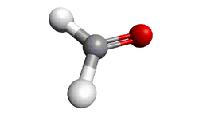|
The experimental data were summarized by
(1) H. S. P. Müller and F. Lewen,
2017, J. Mol. Spectrosc. 331, 28.
Besides new submillimeter data up to 1.5 THz from
that study, transition frequencies were taken
from
(2) W. H. Flygare and J. T. Lowe,
1965, J. Chem. Phys. 43, 3645;
and from
(3) R. Cornet, B. M. Landsberg, and G. Winnewisser,
1980, J. Mol. Spectrosc. 82, 253.
The predictions should be accurate enough for all
astronomical observations. Predictions with calculated
uncertainties exceeding 0.2 MHz should be viewed
with caution.
The 1H hyperfine splitting has not been
resolved in the laboratory and is unlikely to matter
in astronomical observations. 17O hyperfine
splitting is important at long wavelength, but probably
negligible in the submillimeter. A separate
hyperfine calculation is provided up to 600 GHz.
The partition function takes into account the hyperfine splitting.
At low temperatures, it may be necessary to discern between
ortho-H2C17O and
para-H2C17O. The ortho states are
described by Ka odd, the para states by
Ka even. The nuclear spin-weights are 3 and 1
for ortho-H2C17O and
para-H2C17O, respectively.
The JKaKc = 111
is the lowest ortho state. It is 10.5126 cm–1
above ground.
The dipole moment was assumed to agree with that of the main
isotopolog, see e030501.cat.
|
